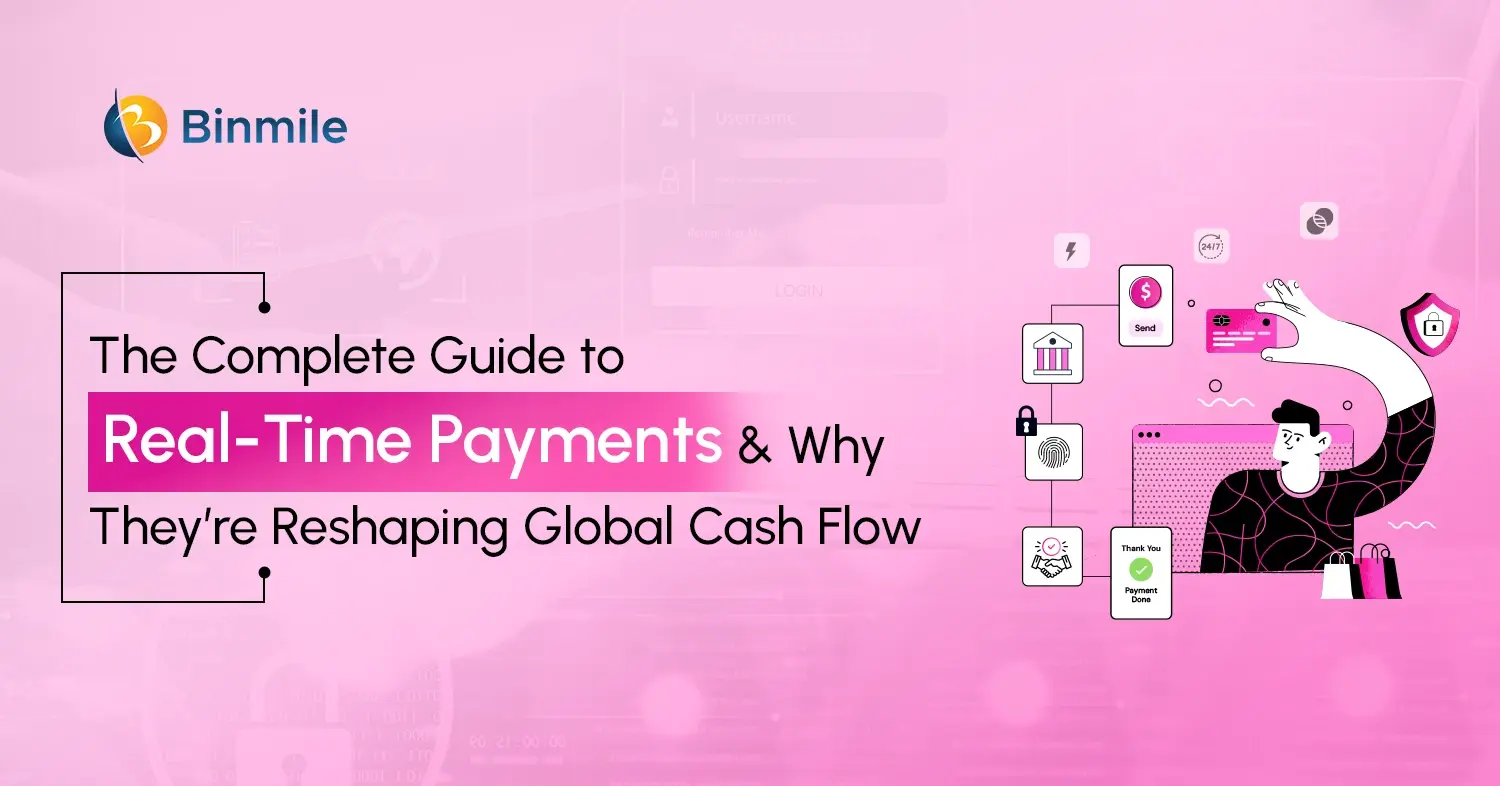The business landscape in the banking industry is getting more competitive and challenging due to various factors, including:
- Changing customer expectations
- Increased competition
- Technology innovation
- Ever-growing regulatory compliances
Among these challenges, there are also some other issues the banking industry faces, like nurturing customer loyalty, retaining customers, and delivering high-quality services to grow amidst emerging new technologies and changing dynamism of the market. Apart from the reasons discussed above, what declines customer loyalty is the free-will of customers in choosing any bank based on their individual experience with today’s digital-first banking systems.
Here is our quick rundown on how the banking industry can improve its customer loyalty using key steps in the age of declining consumer loyalty.
What Do Customers Expect From Financial Institutions?
Today’s customers can’t bear the brunt of a dilatory banking system. Consumers don’t like being deprived of a seamless and personalized banking experience. They want seamless multi-channel access to services. They appreciate meaningful and custom-tailored banking experiences attuned to their discretion.
Banks should ensure that they are doing their best to retain customers through meaningful banking services such as mobile banking in BFSI. Truth is, customers appreciate timely-served banking services satisfying their needs.
Banks need to maintain sustainable business practices, apart from exercising an omnichannel approach. It will ensure that customers interact with their banks across different channels. Such interaction between a bank and customers is seamless. It cements long-lasting business engagement with customers.
What Makes Customer Retention Harder for Banks?

What makes customer retention more challenging for financial institutions is changing customer loyalty these days. If you analyze the cost incurred by a bank to attract a customer, it is five times more compared to retaining an existing customer. However, it also signals an upside for the financial institutions.
According to the report, a 5% uptick in retention generates more than 25% of profitable growth in financial services for the banking industry. Meanwhile, banks must prioritize innovative services and better digital experiences to improve loyal relationships with their consumers.
It is very crucial for banks to create meaningful and personalized banking experiences for customers to cultivate loyal relationships with them.
How Should Traditional Banks Improve Their Customer Loyalty in the Digital Age?
Traditional banks encounter a slowdown in process optimization and improving customer experience. It happens due to the burden of legacy systems and applications they use. If they want to improve their customer experience and build loyal relationships with consumers, they need to address the issue of how to deal with legacy IT.
Since they use aging systems to run their business-critical applications, they are inviting the chance for security threats to the sensitive data of customers. Moreover, they fall short of expectations when serving customers in today’s fast-paced digital world. Moreover, traditional banks also have to get rid of operating in silos. It doesn’t create good impressions on the customers who want banks to look across the organization as a whole.
Five Steps to Building Customer Loyalty in Banking Industry

1. Understand Your Target Customers
It may sound like conventional advice, but the received wisdom of understanding target customers still holds value. Banks need to have professionals, like data analysts and CRM specialists. These professionals can read and interpret market data to help banks come up with marketing campaigns resonating with the discretion of target customers.
How to Know Customers:
- Find out who they are in terms of age, gender, and occupation
- Know what they do, like occupation and interests
- Know when and what drives them to buy a product or a service
- Identify what makes them feel good about buying a product of a service
- What are their expectations?
- How do they see your brand persona?
- What do they think about your competitors?
2. Improve Service Quality:
The survey conducted by Bain & Company revealed in its findings that people are more willing to trust banking services offered by tech companies.

Nearly 54% of the participants in the survey said they trusted at least one tech company over banks in general. About 29% of people surveyed said their trust in their primary bank is relatively less than at least one tech company they believe is trustworthy. The survey indicates the growing importance of how customers prefer the convenience and better quality of services from their banks.
Banks can enhance customer comfort and service quality by leveraging APIs in their offerings, like analyzing customer behavior and facilitating easy interactions, like online bill payment to complex interactions, such as buying a new home. Digitizing banking services to make processes simplified and convenient for customers is one of the most effective techniques for banks. They can improve service quality, leading to a better banking experience for customers in the future.
How to Improve Service Quality in Banks:
- Empower your staff with the necessary resources to meet customers’ needs efficiently
- Education your customers on financial literacy to engage with prospective future customers
- Humanize your digital banking experience
- Centralize your customer data to rid of inter-department redundancy
- Stay in the know of current trends and rising expectations of customers
3. Build Truly Omnichannel Customer Experience
In the age of emerging technologies, customers often stay connected to multiple devices simultaneously. Keeping this trend in mind, banks have to create a communication strategy that can exploit all the touchpoints or build a network that allows integration with numerous channels. As a result, banks will be able to collect and interpret data to conceive predictable risk and service management to anticipate customers needs.
4. Build a Personalized Banking Experience
Given customers have numerous options these days and how they quickly switch over to another competitor, it makes sense why banks must concentrate on personalizing their banking experience for customers.
From improving service quality to utilizing new technologies to understand customer data to conceive a better customer retention strategy, banks have to sharpen their focus on custom-tailoring products and services to satiate the expectations of their target and existing customers.
How to Personalize Banking Experience
- Harness the power of new technologies, such as Artificial Intelligence, Machine Learning, and Deep Learning, to collect and interpret data and build a unique client perception.
- Be available to provide 24/7 real-time personalized banking access across channels
- Launch a personalized rewards program on products based on customer’s spending habits
5. Nurture an Emotional Connection with Customers
For any bank desirous to build long-lasting relationships with its customers, it can’t afford the oversight of how it makes its customers feel. Building emotional connections with customers is one of the top-most priorities for banks to excel in the banking experience.
Companies like Apple, Google, Samsung, etc. are perfect examples of how to build emotional connections with customers. Banks, therefore, should accurately define and measure the emotions of their customers to help them realize they are valued. It will make way for the development of brand loyalty.
Winding Up
Building customer loyalty in the age of digital technologies is one of the most prioritized banking strategies. It is also essential for cultivating long-term customer retention and delivering high-quality and custom-tailored services to customers.
However, building relationships with customers is not an overnight achievement for banks. What makes customer retention harder for banks is fleeting customer loyalty. That’s why they have to innovate their services and digital experience to build customer loyalty. Ideas that we have shared above shed light on key stages of building customer loyalty in banking industry in today’s tech-driven business world and changing customer behaviors.
Are you looking for experts for FinTech software development? Binmile is a leading FinTech software development company helping banking firms transform their financial services amidst emerging technologies and digital innovations. We help them bring automated operational efficiency, greater transparency, and improved customer experience, to stay relevant and ahead of the curve.
Frequently Asked Questions
Bank customer retention refers to the strategies and efforts undertaken by financial institutions to maintain their existing customers and prevent them from switching to competitors. It involves building strong relationships, providing value-added services, and addressing customer needs to foster loyalty and long-term satisfaction.
Bank customer retention is crucial for several reasons:
- Revenue Stability: Retaining existing customers ensures a steady stream of revenue through deposits, loans, and other financial products.
- Cost Efficiency: Acquiring new customers is more expensive than retaining existing ones, making customer retention a cost-effective strategy for banks.
- Brand Loyalty: Loyal customers are more likely to recommend the bank to others and less susceptible to competitive offers, contributing to brand reputation and market share.
- Cross-Selling Opportunities: Satisfied customers are more receptive to cross-selling efforts, allowing banks to promote additional products and services effectively.
Customer retention strategies are vital for banks because:
- Revenue Stability: Retaining existing customers ensures a steady income stream through deposits, loans, and other financial products, contributing to revenue stability.
- Cost Efficiency: Acquiring new customers is typically more expensive than retaining existing ones. Therefore, effective retention strategies can lead to cost savings and improved profitability.
- Brand Loyalty: Satisfied and loyal customers are more likely to advocate for the bank, refer others, and maintain long-term relationships, bolstering the institution’s reputation and market presence.
- Cross-Selling Opportunities: Retained customers are more receptive to additional product offerings, providing opportunities for cross-selling and upselling, which can further enhance revenue.
One key factor in building trust and loyalty in the banking market is delivering exceptional customer service. When banks prioritize providing prompt, knowledgeable, and empathetic support to their customers, it fosters a sense of reliability and care. Additionally, transparent communication about financial products, services, fees, and policies helps to establish credibility and build trust. By consistently exceeding customer expectations and demonstrating a commitment to their financial well-being, banks can cultivate strong relationships based on trust and loyalty in the competitive banking market.









